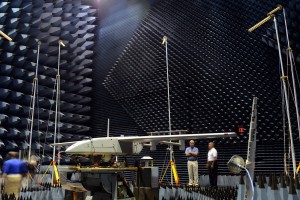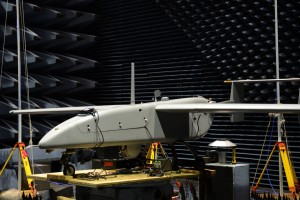Mayflower Communications Company Inc. Awarded Multi-Million Dollar Military GPS User Equipment (MGUE) Phase III contract for GPS Receiver Modernization
 BEDFORD, MA – April 2016 Mayflower Communications Company, Inc. (Mayflower) has been awarded a Phase III SGUE (Small GPS User Equipment) contract with the United States Air Force Research Laboratory sponsored by the Space and Missile Systems Center/GPS Directorate (SMC/GPSD), to develop a small SWaP (Size, Weight, and Power) security certifiable Common GPS Module (CGM) for the Air Force’s Modernized GPS User Equipment (MGUE) Program.
BEDFORD, MA – April 2016 Mayflower Communications Company, Inc. (Mayflower) has been awarded a Phase III SGUE (Small GPS User Equipment) contract with the United States Air Force Research Laboratory sponsored by the Space and Missile Systems Center/GPS Directorate (SMC/GPSD), to develop a small SWaP (Size, Weight, and Power) security certifiable Common GPS Module (CGM) for the Air Force’s Modernized GPS User Equipment (MGUE) Program.
Mayflowers’ small SWaP GPS receiver technology will allow the Department of Defense (DoD) and Agencies to benefit from increased competition, enhanced capability, and reduction in overall program costs to DoD Program Managers and Platform Prime Contractors in upgrading their navigation systems to the modernized M-Code Receiver (MGUE).
Mayflower’s SGUE program is aimed at the development of advanced GPS receiver technology to support future military GPS requirements. The goal of the program is to develop a NAVWAR (Navigation Warfare) compatible CGM form factor that will support SWaP-constrained military users. The SGUE CGM development effort will expand Mayflower’s Military GPS Receiver product line to include modernized NavAssure-M™ product offering so our current customers will have a form-fit-function upgrade path from SAASM to MGUE.
“Mayflower is a leader in small SWaP and miniaturized military GPS receiver and Anti-Jam products. I am confident in the quality and innovation expertise of our GPS engineering team to successfully develop the SGUE CGM,” said Dr. Triveni Upadhyay, Founder and CEO of Mayflower Communications Company, Inc. “The development of small SWaP MGUE form-factors, enabled by SGUE CGM, will have a significant impact in the M-Code Market, providing secure modernized GPS signals to the warfighters and lowering total ownership costs on many military programs.”
“The Air Force is very pleased to see innovative GPS technology developed under its SBIR Program to find commercialization opportunity in the MGUE Market. Mayflower has performed well and we are confident of the SGUE Program success”, said Dana Howell, Air Force Research Laboratory (AFRL) Program Manager.
“The AFRL/GPSD objective in the SGUE Program is to advance MGUE technology and make it affordable to the warfighter. The SGUE Program fits the need and will lower the cost to the user by increased competition enabled by the SGUE Program” said Eddy Emile, Chief, Advanced Technology and International Branch, GPS Directorate.
According to Mayflower, the NavAssure-M™ MGUE receiver form-factors, focused toward small SWaP GPS receiver applications, will be backward compatible to SAASM, therefore, lowering the platform integration cost and total life-cycle cost.
About Mayflower Communications Company, Inc.:
Mayflower Communications Company, a privately held company, based in Bedford, MA, is a technology and innovation leader specializing in small Size, Weight, and Power Global Positioning System (GPS) products and technologies. With a history of innovation spanning 30 years, Mayflower provides state-of-the-art Anti-Jam Electronics and is at the forefront of Military SAASM and MGUE GPS Receiver development and production. Mayflower is designated by the GPS Directorate (GPSD) as an “Authorized SAASM P(Y) Code GPS receiver manufacturer” – one of the seven companies to be recognized. Mayflower is at the cutting edge of Wireless Communication Technologies and has a proven track record in developing innovative solutions for the military and commercial communication market. Mayflower had a successful spin-off, Envoy Networks, Inc., with the backing of leading venture capitalists, to focus on mobile wireless cellular infrastructure market. Envoy Networks was since acquired by Texas Instruments.



 Recent tests of GPS anti-jam antennas on small unmanned aerial vehicles (UAVs) at a Naval Air Systems Command (NAVAIR) facility at Patuxent River, Maryland, showed encouraging results for preventing interruption of mission-critical data.
Recent tests of GPS anti-jam antennas on small unmanned aerial vehicles (UAVs) at a Naval Air Systems Command (NAVAIR) facility at Patuxent River, Maryland, showed encouraging results for preventing interruption of mission-critical data.
